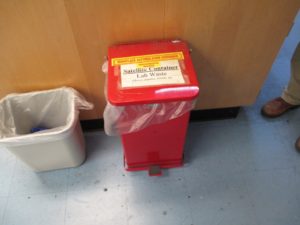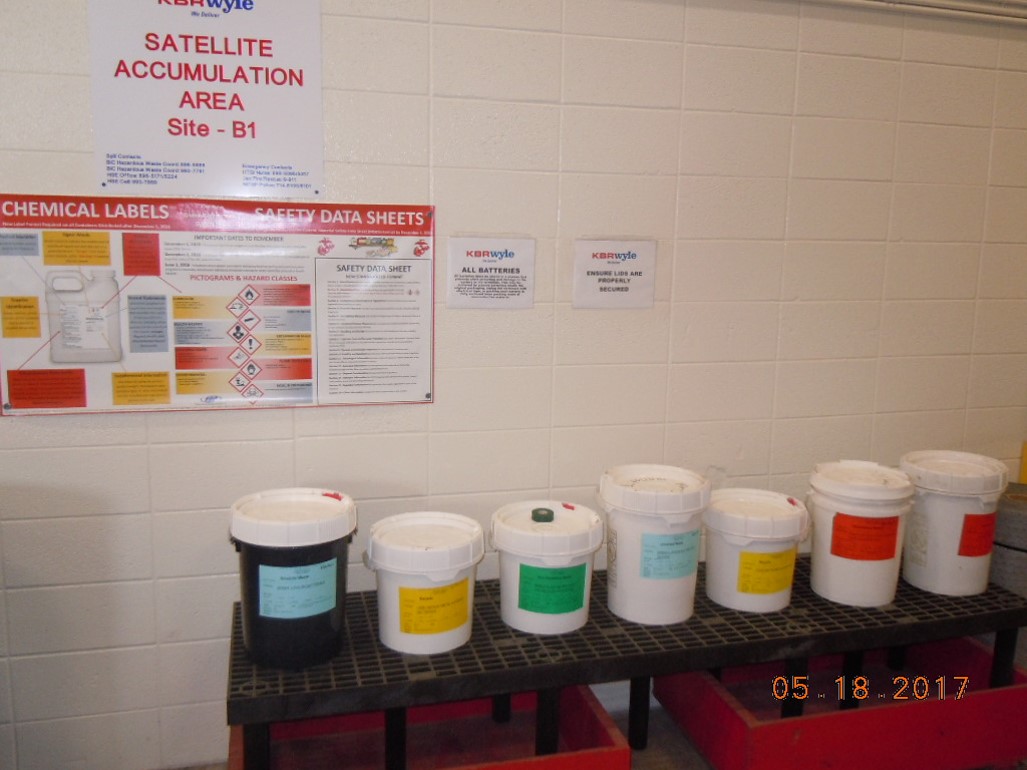Generators who accumulate hazardous waste in a satellite accumulation area (SAA) are likely familiar with the requirement to remove waste from the SAA to the central accumulation area (CAA) when the threshold volume is reached. A generator may also be aware this must be done within three (3) days. The previous SAA regulations at 40 CFR 262.34(c)(2) vaguely indicated this removal be accomplished, “within three days”. Under the Generator Improvements Rule, the USEPA amended the regulations to replace the term “three days” with “three consecutive calendar days”.
The purpose of this article is to explain the regulations at 40 CFR 262.15(a)(6) that require the removal of excess hazardous waste from a satellite accumulation area within three consecutive calendar days.
Before we begin…
- This is one article in a series that reviews all of the changes made to §262.15 by the Generator Improvements Rule.
- The location of these regulations within Title 40 of the Code of Federal Regulations (CFR) was changed by the Generator Improvements Rule. The satellite accumulation area regulations were located at 40 CFR 262.34(c), they are now found at 40 CFR 262.15.
- Other terms considered – and rejected – by USEPA instead of “three consecutive calendar days”:
- “three calendar days”
- “three business days”
- “three working days”
- “72 hours”
- USEPA had already clarified in a 2004 memo (FAQ #3 on page 4) that the term “three days” meant three consecutive days. This guidance is now codified in the generator regulations.
- FAQ: What is a satellite accumulation area?
- FAQ: What is a central accumulation area?
Scope and Applicability:
- Accumulation of hazardous waste in a SAA is an option for both a large quantity generator of hazardous waste (LQG) and a small quantity generator of hazardous waste (SQG). Very small quantity generators of hazardous waste (VSQG) don’t have to comply with SAA regulations per §262.14(a).
Not sure of your hazardous waste generator category? |
- These new regulations were created by the Generator Improvements Rule, which may not yet be adopted by your state. FAQ: What is the status of the Generator Improvements Rule in my state?
- A generator may accumulate either of the following in a SAA:
- Acute hazardous waste
- Non-acute hazardous waste (aka: hazardous waste).
- The thresholds for waste accumulation in a SAA are specified at §262.15(a):
- 1 quart for a liquid acute hazardous waste.
- 1 kilogram or 2.2 pounds for a solid acute hazardous waste.
- 55 gallons for a non-acute hazardous waste.
Contact me with any questions you may have about the generation, identification, management, and disposal of hazardous waste Daniels Training Services, Inc. 815.821.1550 |
40 CFR 262.15(a)(6):
(6) A generator who accumulates either acute hazardous waste listed in §261.31 or §261.33(e) of this chapter or non-acute hazardous waste in excess of the amounts listed in paragraph (a) of this section at or near any point of generation must do the following:
(i) Comply within three consecutive calendar days with the applicable central accumulation area regulations in §262.16(b) or §262.17(a), or
(ii) Remove the excess from the satellite accumulation area within three consecutive calendar days to either:
(A) A central accumulation area operated in accordance with the applicable regulations in §262.16(b) or §262.17(a);
(B) An on-site interim status or permitted treatment, storage, or disposal facility, or
(C) An off-site designated facility; and
(iii) During the three-consecutive-calendar-day period the generator must continue to comply with paragraphs (a)(1) through (5) of this section. The generator must mark or label the container(s) holding the excess accumulation of hazardous waste with the date the excess amount began accumulating.
What’s it mean?

- The volume thresholds for waste accumulation in a SAA are indicated at §262.15(a):
- 1 quart / 1 kilogram for an acute hazardous waste.
- 55 gallons for a non-acute hazardous waste.
- When either of the volume thresholds are exceeded (i.e., more than 1 quart or 1 kilogram of acute hazardous waste or more than 55 gallons of non-acute hazardous waste), the generator must do one of the following:
- Within three consecutive calendar days manage the waste subject to the regulations for a central accumulation area (CAA). In this situation the waste remains in place and the SAA becomes a CAA.
- Within three consecutive calendar days remove the excess waste to one of the following:
- An on-site CAA.
- An on-site treatment, storage or disposal facility (permitted or interim status).
- An off-site designated facility.
- During the three consecutive calendar days the generator must continue to comply with the SAA regulations for container management and hazard communication of §262.15(a)(1-5). Changes made by the Generator Improvements Rule now require the container to be marked or labeled to indicate the hazards of its contents.
And…
- Mark or label the container(s) with the date the excess amount began accumulating. i.e., when the accumulation threshold was exceeded.
Interested in site specific training at your site that covers this topic, and more! Ask me about my Onsite Training |
Q: What happens if I don’t remove the excess amount of hazardous waste / acute hazardous waste from the SAA within three consecutive calendar days?
A: The excess amount becomes subject to the regulations for a container in a central accumulation area (CAA). The exact requirements will depend upon the generator’s category, i.e., LQG or SQG (RO 12503).
So, to sum up, when the accumulation threshold is reached the generator must do the following:
- Immediately mark or label the container(s) holding the excess amount with the date.
- Continue complying with SAA regulations for all containers remaining in the SAA.
- Within three consecutive calendar days remove the excess waste from the SAA to either an on-site CAA, a permitted on-site TSDF, or an off-site designated facility.
Note1: If moved to an on-site CAA, the generator must mark or label the container again with the date it entered the CAA. The generator then has the number of days of on-site accumulation applicable to its generator category (90/180/270).
Note2: Moving the excess waste to another SAA at the generator site is not acceptable.
Q: Can I move a container from the SAA to the CAA before reaching the volume or weight threshold?
A: Yes. In that case it need only be dated when it enters the CAA to indicate the start of its on-site accumulation.
Daniels Training Services, Inc. 815.821.1550 |
Conclusion:
The management of hazardous waste in a SAA is not subject to the Hazardous Waste Personnel training requirements for a LQG or SQG. However, if you manage hazardous waste in a CAA, the training requirements of USEPA – and your state – will apply. Contact me to provide the training you need to maintain compliance.

